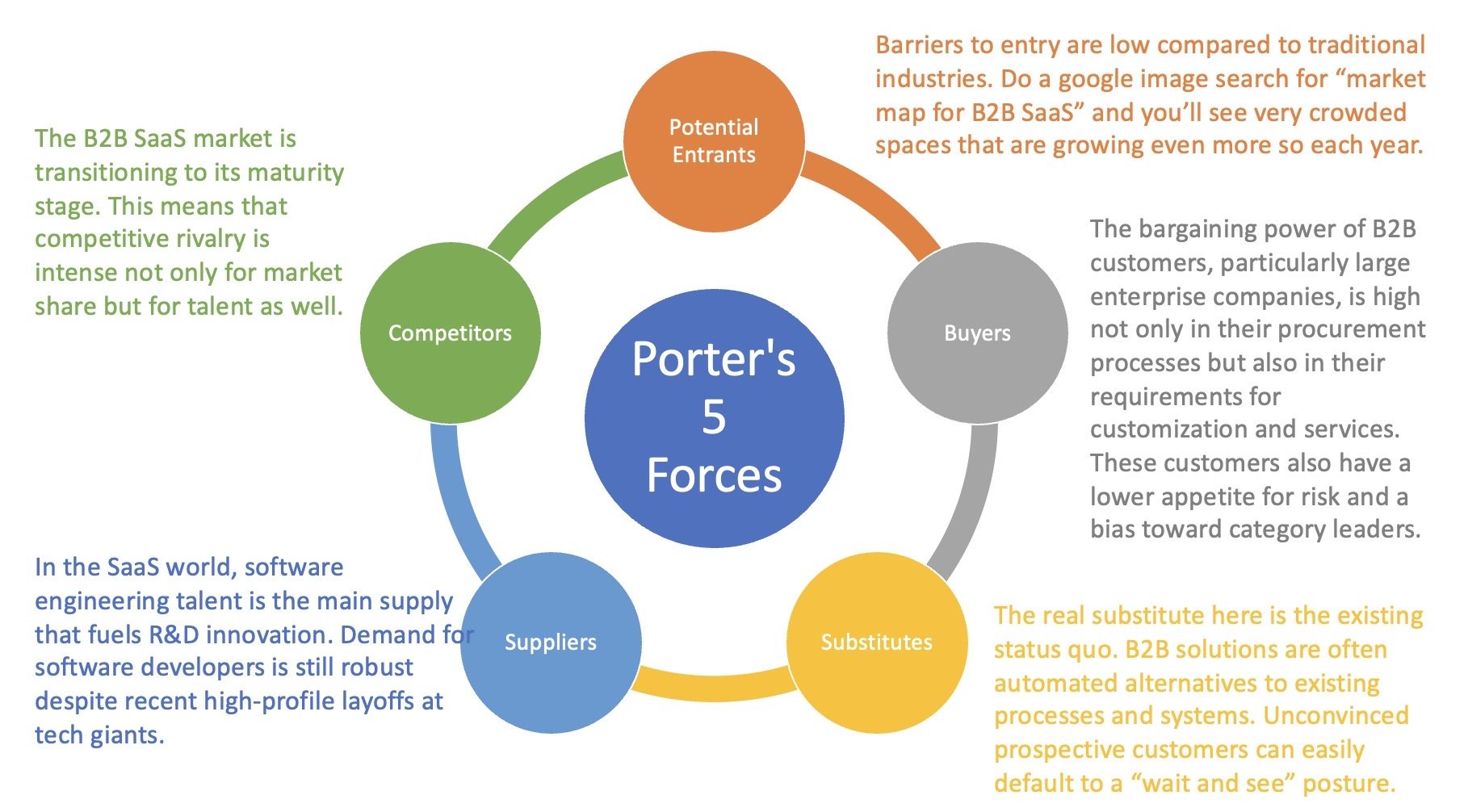How Porter’s 5 Forces Explain Healthcare SaaS Landscape
Michael Porter’s 5 Forces is a classic framework for analyzing the competitive landscape of any industry. Despite the fact that nobody could have imagined a healthcare B2B SaaS marketplace back in 1979 when he created it, the 5 Forces framework is indeed a timeless tool that provides valuable insights. Leaders of B2B SaaS companies selling to the healthcare industry should pay close attention.
Barriers to entry are low compared to traditional industries. Do a google image search for “market map for B2B SaaS” and you’ll see very crowded spaces that are growing even more so each year.
Here’s a look at each of these forces at work in the B2B SaaS market:
The obvious conclusion is that the competitive landscape for B2B SaaS is intense and perhaps more so in the healthcare industry because of the relatively high concentration of large enterprise customers. For example, the top 20 pharmaceutical companies represent almost 40% of the total addressable market. In addition, unlike most other B2B markets, healthcare is heavily influenced by payers and government policy.
It’s a tough competitive landscape undergoing maturation that portends consolidation and shakeouts. In fact, signs of this have already emerged. Therefore, the driving question for SaaS players in this space is: What should you do to increase your odds of surviving and thriving?
Drawing on Porter again, it comes down to the choice and execution of strategy. For B2B SaaS that means to answering 5 interlinked questions:
What makes you truly differentiated from all other rival companies?
Which buyers should you focus on, i.e., the ideal customer profiles and buyer personas who most value your differentiation?
Does your product strategy, positioning, and messaging clearly articulate your differentiation?
Do your buyers care about your value proposition?
Are you pricing for value or simply making the large enterprise pharma companies subsidize the smaller ones?
Many companies may claim they have answers, but in practice these questions are incredibly hard to nail. Business leaders need to articulate their differentiation as well as justify their market choices with evidence. Time will tell if they are correct.
Reference: Porter, M. E. "How Competitive Forces Shape Strategy." Harvard Business Review 57, no. 2 (March–April 1979): 137–145.
